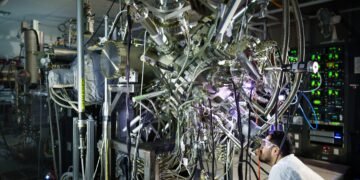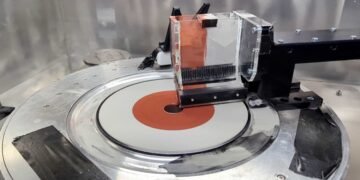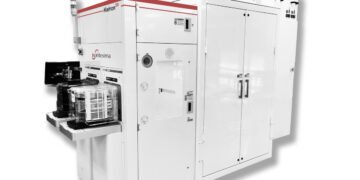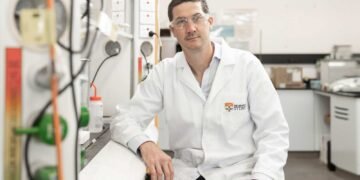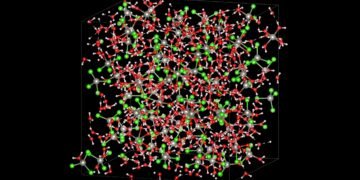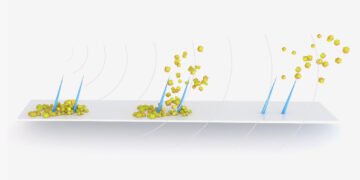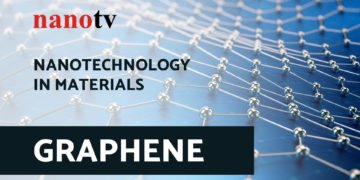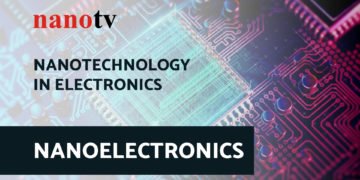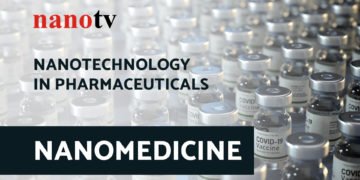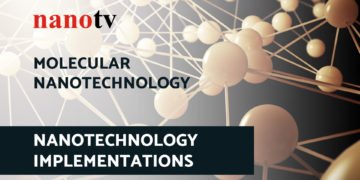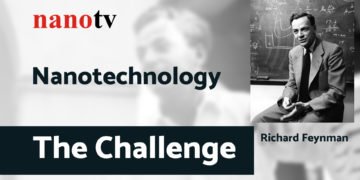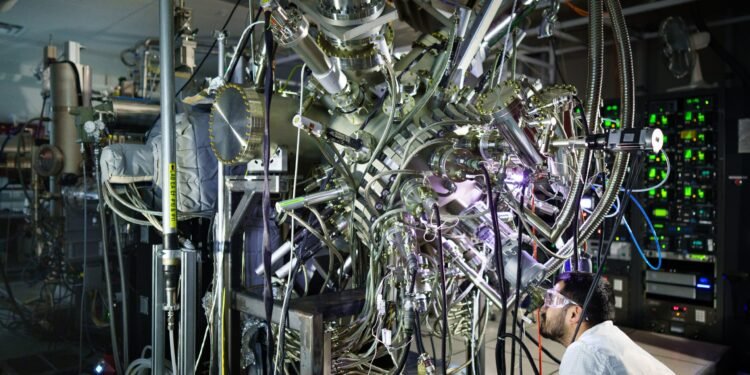A Surprise Contender for Cooling Computers: Lasers
One company says lasers may save energy and water. Sandia Labs is helping test the idea
Sandia National Laboratories is helping a tech company test a bright new idea for cooling computers.
Minnesota-based startup Maxwell Labs has entered into a cooperative research and development agreement with Sandia and the University of New Mexico to demonstrate laser-based photonic cooling for computer chips. The company is pioneering the new technology to regulate the temperature of chips, significantly lower the power consumption and increase the efficiency of conventional air and water-based systems.
“About 30 to 40 percent of the energy data centers use is spent on cooling,” said Raktim Sarma, the lead Sandia physicist on the project. He added that in some communities, the amount of water needed can strain local resources.
Maxwell’s experimental microchip components could bring relief to the data center industry, where energy costs have become a growing concern.
“A successful project will not only address the immediate need for energy savings but also pave the way for processors to operate at performance levels that were previously thought impossible,” Maxwell Co-Founder and Chief Growth Officer Mike Karpe said.
Data centers are where servers, typically thousands of them, process the emails, web searches and doom scrolls that connect the internet. Companies may also own private data centers for activities that need significant computing power, such as training artificial intelligence. All these activities generate heat, so data centers need extensive cooling systems to prevent servers from overheating.
Many researchers, including Sarma, have been studying photonic technologies — devices that harness light to perform useful work — for various applications, including data processing, communications and national security. Compared to electronics, photonics can be faster and more energy efficient.
But Sarma and his team believe this is the first time anyone has tried using photonics to chill computers.
Enter the laser
Although lasers are better known for heating things up, such as in laser welding, engraving and 3D printing, they can also cool under specific conditions. This occurs when a particular light frequency is matched with a very small, very pure target of a specific element. In some quantum computers, for example, lasers help hold individual atoms at super-cold temperatures.
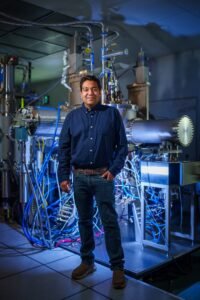
While Sarma cautioned a laser system cannot cool an entire house or any bulk materials, he said it might work for computer chips like GPUs if the cooling light can be focused on small, localized hot spots.
“We really only have to cool down spots that are on the order of hundreds of microns,” about the size of a speck of dust.
Maxwell CEO Jacob Balma says his company aims to do just this. The idea is to use a photonic cold plate to either replace or complement water and air based cooling systems, which also allows for the resulting extracted heat in the form of light to be recycled and turned back into electricity.
In some current systems, cold water flows through microscopic channels in copper cold plates laid over a chip to soak up heat.
The Maxwell cold plate would be a light-based variation, designed with materials and microscopic features roughly the size of a virus — about a thousand times smaller than the thickness of a human hair — that channel cooling laser light to localized hot spots.
Balma said his company’s models indicate a laser-based cooling system can keep chips colder than water-based systems, explaining, “This will enable novel energy-recovery paradigms not possible with traditional cooling technology.”
If the models prove accurate, the new way of cooling could allow chips to operate harder without overheating, improving their overall performance and power efficiency simultaneously.
“The unique capability of light to target and control localized heating spatially and at optical timescales for these devices unlocks thermal design constraints that are so fundamental to chip design that it is hard to speculate what chip architects will do with it — but I trust that it will fundamentally change the types of problems we can solve with computers,” Balma said.
Maxwell’s Chief Technology Officer and Co-Founder, Alejandro Rodriguez, through his role as a professor at Princeton University, has previously collaborated with Sandia’s Sarma to design similar nanophotonic structures for other applications.
“It became clear to me from this collaboration that Dr. Sarma and Sandia Labs are among only a handful of partners that carry the vision, appetite and technical capabilities to address the highly interdisciplinary and pioneering materials, electronics and photonic components of this project,” Rodriguez said.
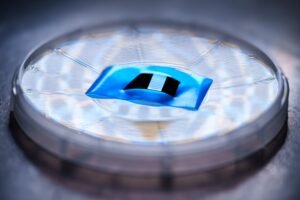
Sandia to build extremely pure gallium arsenide devices
Sandia brings to the collaboration specialized expertise in working with a material called gallium arsenide. It is a semiconductor like silicon, and it makes up most of Maxwell’s cold plate design.
Because laser light will heat up impurities, erasing any cooling effect, the cold plate needs to have extremely pure, thin layers of crystalline gallium arsenide, also known as epitaxial layers, to work. “Which is what we’re good at,” Sarma said.
Sandia has a long history of producing high-quality semiconductors as the nation’s source of microchips for the nuclear stockpile. It also jointly operates the Center for Integrated Nanotechnologies, a Department of Energy Office of Science user facility, with Los Alamos National Laboratory. Sarma and Sandia’s Sadhvikas Addamane, both CINT scientists, will use a technique called molecular beam epitaxy to grow the wafers and build the devices.
“With MBE, we use ultrahigh purity sources, we can control the thickness of materials with a precision of less than one atomic layer and we grow the layers under ultrahigh vacuum,” Sadhvikas said.
Through the new research agreement, Maxwell Labs will generate the technical designs, Sandia will build the devices and UNM will analyze their thermal performance.
These agreements, known as CRADAs, foster mutually beneficial partnerships to facilitate cutting-edge research and development toward commercialization. In fiscal year 2024, Sandia entered into 72 new CRADAs, the second-highest number in the Labs’ 75-year history.
Source: Sandia National Laboratories
